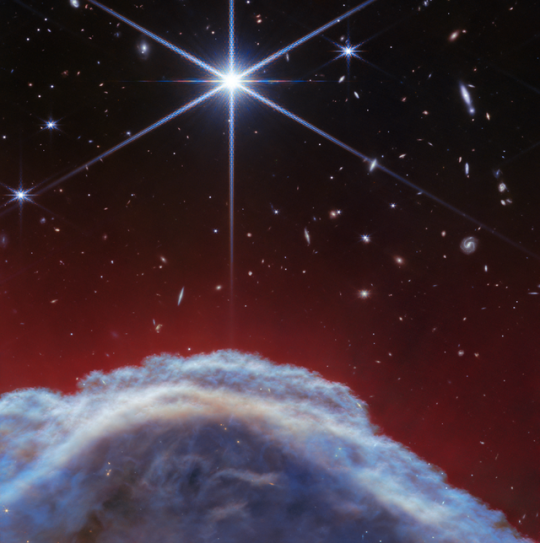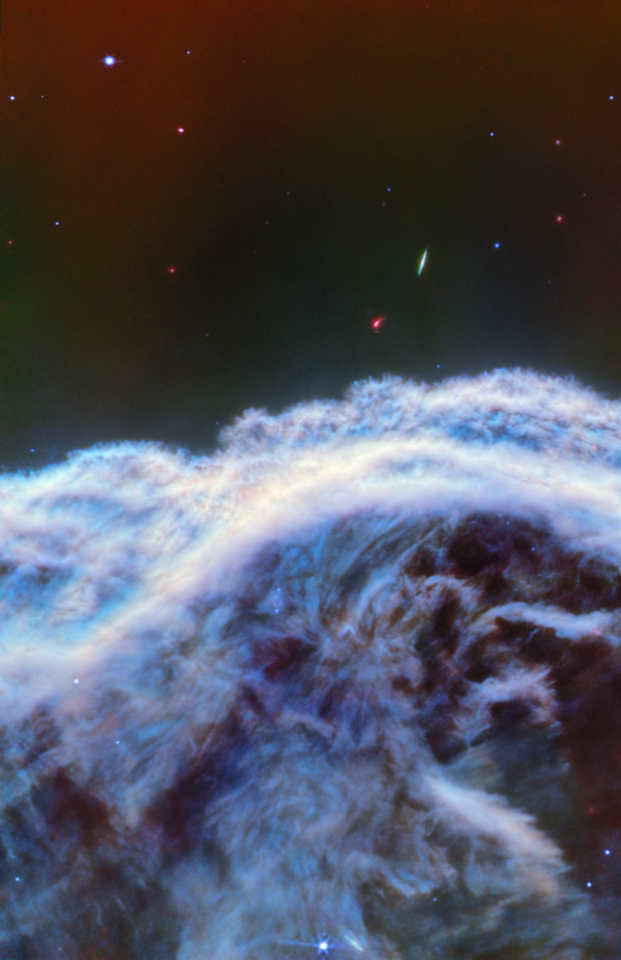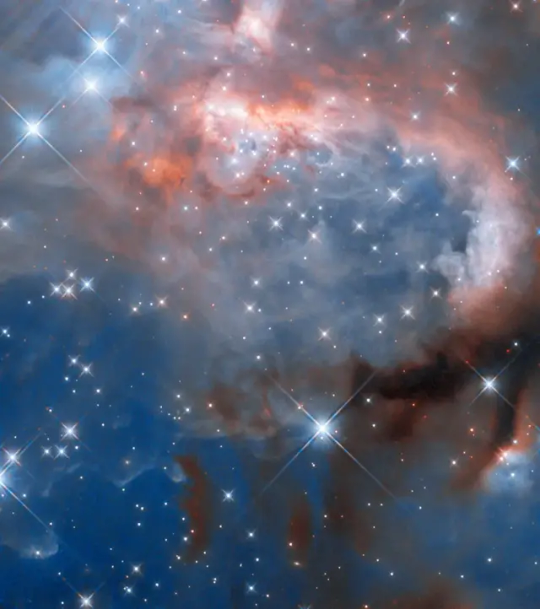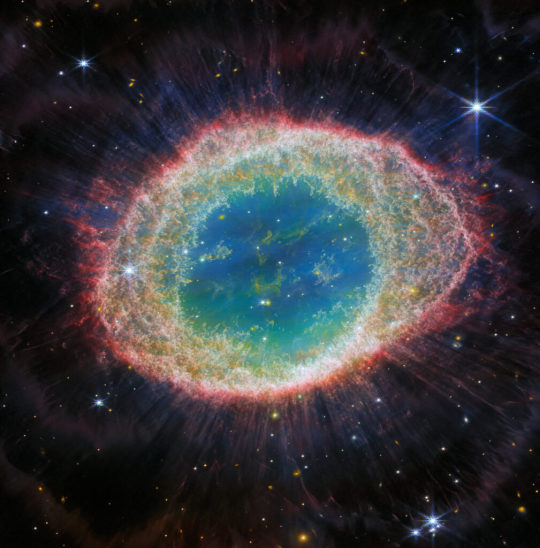#Molecular hydrogen gas
Explore tagged Tumblr posts
Text
https://huelightusa.com/browns-gas-vs-molecular-hydrogen/
Explore the differences between Brown’s gas and molecular hydrogen. This guide shows Brown’s gas and key differences with (H2) molecular hydrogen gas.
0 notes
Text
finally landed on an apocalyptic event idea good enough to base a campaign on. thank fucking god
#a deity dies in the sky and its body collides w earth#the ensuing decomposition releases literal magic into the atmosphere via gas and fluid release#im doing a run of the Quiet Year first to build the world (yes im stealing the mcelroys idea)#the timeline is theres a year until a gas erruption from the main chamber of the body permanently changes the chemical makeup of the planet#on like a molecular level. no more oxygen essentially#or hydrogen ? i need to read up on the decomposition process and also how molecules chain together#hmmm.
8 notes
·
View notes
Text
#hydrogen inhalation machine#hydrogen inhalation#hydrogen#hydrogen machine#hydrogen water generator#hydrogen generator#hydrogen generation#hydrogen inhaler machine#generate hydrogen#molecular hydrogen#hydrogen generators#hydrogen gas generator#generating hydrogen#hydrogen power generator#hydrogen generator for home#hydrogen powered generator#hydrogen benefits#generator hydrogen#hydrogen machine video#hydrogen therapy#hydrogen water
0 notes
Text


This image of the Horsehead Nebula from NASA’s James Webb Space Telescope focuses on a portion of the horse’s “mane” that is about 0.8 light-years in width. It was taken with Webb’s NIRCam (Near-infrared Camera). The ethereal clouds that appear blue at the bottom of the image are dominated by cold, molecular hydrogen. Red-colored wisps extending above the main nebula represent mainly atomic hydrogen gas.
Credit: NASA
2K notes
·
View notes
Photo

2024 December 28
A December Winter Night Image Credit & Copyright: WÅ‚odzimierz Bubak
Explanation: Orion seems to come up sideways, climbing over a distant mountain range in this deep skyscape. The wintry scene was captured from southern Poland on the northern hemisphere's long solstice night. Otherwise unseen nebulae hang in the sky, revealed by the camera modified to record red hydrogen-alpha light. The nebulae lie near the edge of the Orion molecular cloud and join the Hunter's familiar belt stars and bright giants Betelgeuse and Rigel. Eye of Taurus the Bull, yellowish Aldebaran anchors the V-shaped Hyades star cluster near top center. Still, near opposition in planet Earth's sky, the Solar System's ruling gas giant Jupiter is the brightest celestial beacon above this horizon's snowy peaks.
∞ Source: apod.nasa.gov/apod/ap241228.html
112 notes
·
View notes
Text
WITCH HEAD NEBULA * IC 2118 (also known as Witch Head Nebula due to its shape) is an extremely faint reflection nebula believed to be an ancient supernova remnant or gas cloud illuminated by nearby supergiant star Rigel in the constellation of Orion. It lies in the Orion constellation, about 900 light-years from Earth. The nature of the dust particles, reflecting blue light better than red, is a factor in giving the Witch Head its blue color. Radio observations show substantial carbon monoxide emission throughout parts of IC 2118, an indicator of the presence of molecular clouds and star formation in the nebula. In fact candidates for pre-main sequence stars and some classic T-Tauri stars have been found deep within the nebula. The molecular clouds of IC 2118 are probably juxtaposed to the outer boundaries of the vast Orion-Eridanus bubble, a giant supershell of molecular hydrogen blown by the high mass stars of the Orion OB1 association. As the supershell expands into the interstellar medium, favorable circumstances for star formation occur. IC 2118 is located in one such area. The wind blown appearance and cometary shape of the bright reflection nebula is highly suggestive of a strong association with the high mass luminous stars of Orion OB1. The fact that the heads of the cometary clouds of IC2118 point northeast towards the association is strong support of that relationship.. Credit to Pablo Carlos Budassi.

#nebula and quasar#dark nebula#nebulosa#neutron stars#planetary nebula#nebula#astronomy#astronomers#nasa#universe#nasa photos#astrophotography#astrophysics#outer space#nasawebb#hubble space telescope#space exploration#space#science#james webb space telescope#space shuttle#science facts#nasa science#planetary science#planet earth#i love astronomy#astronomy facts#cosmos#the universe#nasaastronaut
113 notes
·
View notes
Text
"It may sound surprising, but when times are tough and there is no other food available, some soil bacteria can consume traces of hydrogen in the air as an energy source.
In fact, bacteria remove a staggering 70 million tonnes of hydrogen yearly from the atmosphere, a process that literally shapes the composition of the air we breathe.
We have isolated an enzyme that enables some bacteria to consume hydrogen and extract energy from it, and found it can produce an electric current directly when exposed to even minute amounts of hydrogen.
As we report in a new paper in Nature, the enzyme may have considerable potential to power small, sustainable air-powered devices in future.
Bacterial genes contain the secret for turning air into electricity
Prompted by this discovery, we analysed the genetic code of a soil bacterium called Mycobacterium smegmatis, which consumes hydrogen from air.
Written into these genes is the blueprint for producing the molecular machine responsible for consuming hydrogen and converting it into energy for the bacterium. This machine is an enzyme called a “hydrogenase”, and we named it Huc for short.
Hydrogen is the simplest molecule, made of two positively charged protons held together by a bond formed by two negatively charged electrons. Huc breaks this bond, the protons part ways, and the electrons are released...
The molecular blueprint for extracting hydrogen from air
With Huc isolated, we set about studying it in earnest, to discover what exactly the enzyme is capable of. How can it turn the hydrogen in the air into a sustainable source of electricity?
Remarkably, we found that even when isolated from the bacteria, Huc can consume hydrogen at concentrations far lower even than the tiny traces in the air. In fact, Huc still consumed whiffs of hydrogen too faint to be detected by our gas chromatograph, a highly sensitive instrument we use to measure gas concentrations...
Enzymes could use air to power the devices of tomorrow
It’s early days for this research, and several technical challenges need to be overcome to realise the potential of Huc.
For one thing, we will need to significantly increase the scale of Huc production. In the lab we produce Huc in milligram quantities, but we want to scale this up to grams and ultimately kilograms.
However, our work demonstrates that Huc functions like a “natural battery” producing a sustained electrical current from air or added hydrogen.
As a result, Huc has considerable potential in developing small, sustainable air-powered devices as an alternative to solar power.
The amount of energy provided by hydrogen in the air would be small, but likely sufficient to power a biometric monitor, clock, LED globe or simple computer. With more hydrogen, Huc produces more electricity and could potentially power larger devices.
Another application would be the development of Huc-based bioelectric sensors for detecting hydrogen, which could be incredibly sensitive. Huc could be invaluable for detecting leaks in the infrastructure of our burgeoning hydrogen economy or in a medical setting.
In short, this research shows how a fundamental discovery about how bacteria in soils feed themselves can lead to a reimagining of the chemistry of life. Ultimately it may also lead to the development of technologies for the future."
-via The Conversation, March 8, 2023. Article written by the authors of the study.
#hydrogen#huc#renewable energy#clean energy#electricity#science and technology#physics#chemistry#good news#hope
343 notes
·
View notes
Text



Origins : Complexity Rising 18 x 24 inches, Oil on Panel, A new painting from an earlier study.
We tend to think of evolution as a biological process of rising complexity that began with single-celled organisms here on earth, but the universe has been undergoing a cosmic evolution of growing complexity from the very beginning.
Before there could be cells, there needed to be complex molecules and an array of elements to make them. The earliest known events of the universe generated only a few of the lightest elements: hydrogen, helium, and trace amounts of lithium. Until the first stars formed and began fusing protons and neutrons into larger nuclei the universe was devoid of heavier elements, including the carbon, nitrogen, and oxygen of which we are made. Other processes took these elements and bonded them into basic amino acids and other molecular building blocks of life as we know it.
Biological evolution on our planet is thought to be nearly as old as the Earth, but the complexity that made it possible has been accumulating since time began.
_______
In this painting, the thread of gas and dust that grows from the left and reaches a crescendo at the right represents the growth of complexity through time. Also featured is a developing galaxy, early massive hot blue stars fusing higher elements, a supernova explosion spreading higher elements into space, a new star and protoplanetary disk enriched with elements, and a newly formed earth-like planet in the bottom right. The figure, an allegory of rising complexity, wears a necklace featuring a carbon atom and her hairpiece is a model of a basic amino acid that has been found abundantly in outer space. These are the building blocks of life ready for biological evolution to begin!
199 notes
·
View notes
Text

Rho Ophiuchi ~ our nearest star forming cloud complex. Taken by James Webb on it's first birthday.
Stars within this cloud are similar in mass to the Sun or smaller. This bright red emission comes from jets of molecular Hydrogen gas flowing at fast velocities from an invisible protostar, VLA1623, a star so young that many Stone Age cave paintings pre-date it!
source: https://esawebb.org/images/weic2316a/
#space#nasa#stars#constellations#photography#astrophysics#astronomy#astrophotography#nebula#james webb telescope#nasa breaking news#NASA
397 notes
·
View notes
Photo

The Dark Tower in Scorpius, 2024-08-22
In silhouette against a crowded star field along the tail of the arachnological constellation Scorpius, this dusty cosmic cloud evokes for some the image of an ominous dark tower. In fact, monstrous clumps of dust and molecular gas collapsing to form stars may well lurk within the dark nebula, a structure that spans almost 40 light-years across this gorgeous telescopic portrait. A cometary globule, the swept-back cloud is shaped by intense ultraviolet radiation from the OB association of very hot stars in NGC 6231, off the upper right corner of the scene. That energetic ultraviolet light also powers the globule's bordering reddish glow of hydrogen gas. Hot stars embedded in the dust can be seen as bluish reflection nebulae. This dark tower and associated nebulae are about 5,000 light-years away. Growing Gallery: Moon Eclipses Saturn in August 2024
Credits: NASA's 'Astronomy Picture Of The Day.'
30 notes
·
View notes
Text

Hubble Captures Infant Stars Transforming a Nebula
Named RCW 7, the nebula is located just over 5300 light-years from Earth in the constellation Puppis. Nebulae are areas of space that are rich in the raw material needed to form new stars. Under the influence of gravity, parts of these molecular clouds collapse until they coalesce into protostars, surrounded by spinning discs of leftover gas and dust. In the case of RCW 7, the protostars forming here are particularly massive, giving off strongly ionising radiation and fierce stellar winds that have transformed it into what is known as a H II region. The ultraviolet radiation from the massive protostars excites the hydrogen, causing it to emit light and giving this nebula its soft pinkish glow. Here Hubble is studying a particular massive protostellar binary named IRAS 07299-1651, still in its glowing cocoon of gas in the curling clouds towards the top of the nebula. To expose this star and its siblings, this image was captured using the Wide Field Camera 3 in near-infrared light. The massive protostars here are brightest in ultraviolet light, but they emit plenty of infrared light which can pass through much of the gas and dust around them and be seen by Hubble.
Image Credit: ESA/Hubble & NASA, J. Tan (Chal
#nasa#astronomy#nebula#RCW 7#constellation Puppis#IRAS 07299-1651#protostars#god's creation#gods creation#space#universe#sky#love#beauty#natural#nature#mother nature
38 notes
·
View notes
Text

Dark matter could have helped make supermassive black holes in the early universe
It takes a long time for supermassive black holes, like the one at the center of our Milky Way galaxy, to form. Typically, the birth of a black hole requires a giant star with the mass of at least 50 of our suns to burn out—a process that can take a billion years—and its core to collapse in on itself.
Even so, at only about 10 solar masses, the resulting black hole is a far cry from the 4 million-solar-masses black hole, Sagittarius A*, found in our Milky Way galaxy, or the billion-solar-mass supermassive black holes found in other galaxies. Such gigantic black holes can form from smaller black holes by accretion of gas and stars, and by mergers with other black holes, which take billions of years.
Why, then, is the James Webb Space Telescope discovering supermassive black holes near the beginning of time itself, eons before they should have been able to form? UCLA astrophysicists have an answer as mysterious as the black holes themselves: Dark matter kept hydrogen from cooling long enough for gravity to condense it into clouds big and dense enough to turn into black holes instead of stars. The finding is published in the journal Physical Review Letters.
"How surprising it has been to find a supermassive black hole with a billion solar mass when the universe itself is only half a billion years old," said senior author Alexander Kusenko, a professor of physics and astronomy at UCLA. "It's like finding a modern car among dinosaur bones and wondering who built that car in the prehistoric times."
Some astrophysicists have posited that a large cloud of gas could collapse to make a supermassive black hole directly, bypassing the long history of stellar burning, accretion and mergers. But there's a catch: Gravity will, indeed, pull a large cloud of gas together, but not into one large cloud. Instead, it gathers sections of the gas into little halos that float near each other but don't form a black hole.
The reason is that the gas cloud cools too quickly. As long as the gas is hot, its pressure can counter gravity. However, if the gas cools, pressure decreases, and gravity can prevail in many small regions, which collapse into dense objects before gravity has a chance to pull the entire cloud into a single black hole.
"How quickly the gas cools has a lot to do with the amount of molecular hydrogen," said first author and doctoral student Yifan Lu. "Hydrogen atoms bonded together in a molecule dissipate energy when they encounter a loose hydrogen atom. The hydrogen molecules become cooling agents as they absorb thermal energy and radiate it away. Hydrogen clouds in the early universe had too much molecular hydrogen, and the gas cooled quickly and formed small halos instead of large clouds."
Lu and postdoctoral researcher Zachary Picker wrote code to calculate all possible processes of this scenario and discovered that additional radiation can heat the gas and dissociate the hydrogen molecules, altering how the gas cools.
"If you add radiation in a certain energy range, it destroys molecular hydrogen and creates conditions that prevent fragmentation of large clouds," Lu said.
But where does the radiation come from?
Only a very tiny portion of matter in the universe is the kind that makes up our bodies, our planet, the stars and everything else we can observe. The vast majority of matter, detected by its gravitational effects on stellar objects and by the bending of light rays from distant sources, is made of some new particles, which scientists have not yet identified.
The forms and properties of dark matter are therefore a mystery that remains to be solved. While we don't know what dark matter is, particle theorists have long speculated that it could contain unstable particles which can decay into photons, the particles of light. Including such dark matter in the simulations provided the radiation needed for the gas to remain in a large cloud while it is collapsing into a black hole.
Dark matter could be made of particles that slowly decay, or it could be made of more than one particle species: some stable and some that decay at early times. In either case, the product of decay could be radiation in the form of photons, which break up molecular hydrogen and prevent hydrogen clouds from cooling too quickly. Even very mild decay of dark matter yielded enough radiation to prevent cooling, forming large clouds and, eventually, supermassive black holes.
"This could be the solution to why supermassive black holes are found very early on," Picker said. "If you're optimistic, you could also read this as positive evidence for one kind of dark matter. If these supermassive black holes formed by the collapse of a gas cloud, maybe the additional radiation required would have to come from the unknown physics of the dark sector."
IMAGE: A James Webb Telescope image shows the J0148 quasar circled in red. Two insets show, on top, the central black hole, and on bottom, the stellar emission from the host galaxy. Credit: MIT/NASA
23 notes
·
View notes
Note
I have a physics question off of the "what is energy" post.
So is hot is small fast, that means cold has to be big slow right? (Possibly wrong idk)
What is the....fastness...and hotness....of...objects? Like pillows and books. A pillow would technically be room temperature. But it's made of particles. And I know that it's temperature doesn't dictate it's state of matter, but if you heated it up, it could catch fire and make smoke. So DOES temperature determine if it's a regular old object or not? Is there a fastness for pillows?
I may be thinking of this wrong.
[Anon sent a follow-up:
I asked the fastness of a pillow question and I think I got it.
It isn't hotness and fastness that makes the pillow. The hot and fast makes the molecules that make the oil that the (plastic synthetic fibers=oil so yeah) pillow is made from. But if you apply the small fastness to the pillow you may make it into a different state. I think.]
You're asking a lot of different questions here but I think you're fundamentally falsely conflating matter and energy. Things are matter. Matter has energy.
Let me try to break this out.
What do you mean when you say that hot is "fast but small?"
Heat is just a measurement of the motion of all of the atoms and molecules in a medium. Atoms are constantly vibrating. The faster they vibrate, the more friction they give off as they bump into each other. That friction converts the movement of the atom into heat energy.
2. If that's what hot is, then what is cold?
Nothing. Cold doesn't exist. Cold is just an absence of heat. If all of the atoms in a medium completely stopped vibrating, they would reach "absolute zero" temperature.
3. Does temperature dictate an object's state of matter?
Yes, of course. Every element can exist as a gas, liquid, or solid, and the easiest way of moving them from one state to the other is by changing their temperature. If you heat up a molecule, its atoms start vibrating faster, and the bonds between them start to break apart. Think of it like a room full of kindergartners all holding hands and jumping up and down. The harder they jump, the harder it is for them to keep holding hands.
4. Why does high temperature cause some things to burn?
Oxygen, for reasons which I think are probably too complex to get into here, is not particularly stable. It wants two more electrons than it has, and it will rip other molecules apart in order to get them. Low key it's doing that all the time. And the more energy you give oxygen (say, by raising the air temperature in a room, causing its atoms to vibrate faster), the more strength it has to do the ripping.
Mostly it rips apart hydrogen and carbon, with which it can form very stable molecules of carbon dioxide and water. (Molecules like to be stable.) Things are actually considered flammable if they have hydrogen and carbon atoms to give to oxygen. All organic matter has both: including cotton, linen, feathers, all petroleum-based products, and whatever else most pillows are made of. Ever heard life on earth described as "carbon-based?" Yeah. You're full of carbon, so you're flammable.
The fire you experience is just the heat and light given off by the electrons in the oxygen, hydrogen, and carbon atoms in the system jumping and dropping to higher and lower energy states, as molecular bonds are broken and new molecular bonds are formed.
All of which is to say: I think you're confusing yourself by bringing combustion into this. That's in the 102 course.
5. What energy does a pillow have?
Plenty. It has the chemical energy binding its molecules together (which can be unleashed in a combustion reaction); it has the nuclear energy binding its atoms' nuclei together; it has the heat energy from the standard amount of atomic vibration you'd get in an ordinary room; and it has potential energy from its position in the universe (if you removed all of the obstructions in its way, the pillow would start falling towards the black hole at the center of our galaxy. That motion energy is being 'stored' as potential energy).
All of that energy originated in the Big Bang.
32 notes
·
View notes
Text
Elevate Your Health Discover the Benefits of Hydrogen Oxygen Inhalation Machines | (2024)

In today's world, the quest for improved health and wellness never stops. We constantly seek new ways to enhance our physical and mental well-being. Among the latest innovations making waves in the health community are hydrogen oxygen inhalation machines. Designed to offer numerous health benefits, these machines are gaining popularity among health enthusiasts, athletes, and wellness seekers. In this blog post, we'll explore what hydrogen oxygen inhalation machines are, how they work, and why you might want to consider incorporating one into your wellness routine.
Understanding Hydrogen Oxygen Inhalation
How Do These Machines Work?
Hydrogen oxygen inhalation machines are cutting-edge devices that generate a mixture of hydrogen and oxygen gases for inhalation. The process begins with electrolysis, where water molecules are split into hydrogen and oxygen. These gases are then combined and delivered through a nasal cannula or mask for inhalation. This blend is believed to offer various health benefits, making it a popular choice among wellness enthusiasts.
The Science Behind Hydrogen and Oxygen Inhalation
The science supporting hydrogen oxygen inhalation is compelling. Hydrogen, known for its antioxidant properties, helps neutralize harmful free radicals in the body. Oxygen, essential for cellular respiration, ensures that cells receive the energy they need to function optimally. When inhaled together, these gases can potentially enhance cellular health, reduce inflammation, and improve overall well-being.
Different Types of Machines Available
There are several types of hydrogen oxygen inhalation machines on the market, each with unique features. Some models offer higher flow rates, delivering more hydrogen and oxygen per minute. Others come equipped with advanced safety mechanisms, such as low-water alerts and automatic shut-offs. When choosing a machine, consider factors like flow rate, safety features, and ease of use.
Health Benefits of Hydrogen Oxygen Inhalation
Improved Lung Function and Respiratory Health
One of the primary benefits of hydrogen oxygen inhalation is improved lung function. This is particularly beneficial for individuals with respiratory conditions such as asthma or COPD. The inhalation of hydrogen and oxygen can help reduce inflammation in the airways, making it easier to breathe and enhancing overall respiratory health.
Enhanced Athletic Performance and Faster Recovery
Athletes are always looking for ways to boost their performance and speed up recovery times. Hydrogen oxygen inhalation can be a game-changer in this regard. The increased oxygen levels can enhance endurance, while hydrogen's antioxidant properties can help reduce muscle fatigue and inflammation. This combination allows athletes to train harder and recover faster.
Potential Benefits for Individuals with Respiratory Conditions
For those with chronic respiratory conditions, hydrogen oxygen inhalation offers a promising therapeutic option. The anti-inflammatory effects of hydrogen, coupled with the oxygen's ability to improve cellular respiration, can provide significant relief from symptoms. This makes it a valuable addition to traditional treatments for conditions like asthma, bronchitis, and COPD.
Mental Health and Cognitive Benefits
Mental health is as crucial as physical health, and hydrogen oxygen inhalation can support both. Hydrogen has been shown to have neuroprotective effects, potentially improving cognitive function and reducing symptoms of anxiety and depression. Regular inhalation sessions can help keep your mind sharp and your mood balanced.
Eco-Friendly and Sustainable Aspects
Comparison of Hydrogen Oxygen Inhalation to Traditional Inhalation Methods
Traditional inhalation methods, like nebulizers and inhalers, often rely on synthetic medications and can have side effects. Hydrogen oxygen inhalation offers a natural alternative. It uses only water and electricity to produce the therapeutic gases, making it a safer and more eco-friendly option.
Environmental Impact and Carbon Footprint
In an age where sustainability is paramount, hydrogen oxygen inhalation stands out as an environmentally friendly choice. The process generates minimal waste and has a lower carbon footprint compared to other inhalation methods. By choosing hydrogen oxygen inhalation, you're not only benefiting your health but also contributing to a greener planet.
Real-Life Experiences and Testimonials
Case Studies and Testimonials from Users
Nothing speaks louder than real-life experiences. Many users have reported remarkable improvements in their health after incorporating hydrogen oxygen inhalation into their routines. For instance, Susan, a mother of two with asthma, shared how her breathing improved significantly after just a few weeks of use. Kevin, an athlete, noted faster recovery times and enhanced performance during his training sessions.
Varied Perspectives from Health Enthusiasts, Athletes, and Individuals with Respiratory Conditions
Whether you're a health enthusiast looking to optimize your wellness, an athlete seeking to push your limits, or someone dealing with a respiratory condition, hydrogen oxygen inhalation machines have something to offer. The diverse benefits and applications make it a versatile tool in the pursuit of better health.
How to Choose the Right Machine
Key Factors to Consider When Purchasing
When selecting a hydrogen oxygen inhalation machine, it's essential to consider your specific needs. Look at the flow rate, safety features, and ease of use. A machine with a higher flow rate will deliver more hydrogen and oxygen, potentially offering greater benefits. Safety features, such as automatic shut-offs and low-water alerts, are crucial for ensuring safe operation.
Safety Precautions and Usage Guidelines
While hydrogen oxygen inhalation is generally safe, it's important to follow usage guidelines to avoid any potential risks. Always use the machine as instructed and ensure proper ventilation in the room. If you have any pre-existing medical conditions, consult with a healthcare professional before starting hydrogen oxygen inhalation.
Conclusion
Summary of the Benefits of Hydrogen Oxygen Inhalation
Hydrogen oxygen inhalation offers numerous health benefits, from improved respiratory function and enhanced athletic performance to mental health support. Its eco-friendly nature makes it a sustainable choice for those looking to reduce their environmental impact.
Call to Action for Further Engagement or Purchase
Ready to experience the benefits for yourself? Consider investing in a hydrogen oxygen inhalation machine today. It's an investment in your health and well-being that will pay off in the long run.
Final Thoughts
Hydrogen oxygen inhalation is more than just a wellness trend; it's a powerful tool for enhancing your overall health. By incorporating it into your daily routine, you can unlock a myriad of benefits and take your wellness to the next level.
FAQ
What is hydrogen oxygen inhalation?
Hydrogen oxygen inhalation involves breathing in a mixture of hydrogen and oxygen gases generated by a specialized machine. This practice is believed to offer various health benefits, including improved respiratory and cognitive function.
Are hydrogen oxygen inhalation machines safe to use?
Yes, hydrogen oxygen inhalation machines are generally safe to use when operated according to the manufacturer's guidelines. Look for machines with built-in safety features and consult with a healthcare professional if you have any concerns.
How often should I use a hydrogen oxygen inhalation machine?
The frequency of use can vary depending on individual needs and health goals. Some people may use the machine daily, while others might use it a few times a week. It's best to start with shorter sessions and gradually increase the duration as your body adapts.
Reference
For a deeper understanding of hydrogen oxygen inhalation and its benefits, consider exploring the following resources:
By staying informed and making educated decisions, you can maximize the benefits of hydrogen oxygen inhalation and take charge of your health and wellness.
Experience the benefits of hydrogen oxygen inhalation for yourself. Contact us https://h2lifetech.com/for more information and to get started on your wellness journey today!
Post Tags
#hydrogen inhalation machine#hydrogen inhalation#hydrogen#hydrogen machine#hydrogen water generator#hydrogen generator#hydrogen generation#hydrogen inhaler machine#generate hydrogen#molecular hydrogen#hydrogen generators#hydrogen gas generator#generating hydrogen#hydrogen power generator#hydrogen generator for home#hydrogen powered generator#hydrogen benefits#generator hydrogen#hydrogen machine video#hydrogen therapy#hydrogen water
0 notes
Text

NASA’s James Webb Space Telescope has observed the well-known Ring Nebula in unprecedented detail. Formed by a star throwing off its outer layers as it runs out of fuel, the Ring Nebula is an archetypal planetary nebula. This new image from Webb’s NIRCam (Near-Infrared Camera) shows intricate details of the filament structure of the inner ring. There are some 20,000 dense globules in the nebula, which are rich in molecular hydrogen. In contrast, the inner region shows very hot gas. The main shell contains a thin ring of enhanced emission from carbon-based molecules known as polycyclic aromatic hydrocarbons (PAHs).
Credit: ESA/Webb, NASA, CSA, M. Barlow (University College London), N. Cox (ACRI-ST), R. Wesson (Cardiff University)
2K notes
·
View notes
Photo

2024 November 25
The Horsehead Nebula Image Credit & Copyright: Alex Lin (Chilescope)
Explanation: One of the most identifiable nebulas in the sky, the Horsehead Nebula in Orion, is part of a large, dark, molecular cloud. Also known as Barnard 33, the unusual shape was first discovered on a photographic plate in the late 1800s. The red glow originates from hydrogen gas predominantly behind the nebula, ionized by the nearby bright star Sigma Orionis. The darkness of the Horsehead is caused mostly by thick dust, although the lower part of the Horsehead's neck casts a shadow to the left. Streams of gas leaving the nebula are funneled by a strong magnetic field. Bright spots in the Horsehead Nebula's base are young stars just in the process of forming. Light takes about 1,500 years to reach us from the Horsehead Nebula. The featured image was taken from the Chilescope Observatory in the mountains of Chile.
∞ Source: apod.nasa.gov/apod/ap241125.html
147 notes
·
View notes